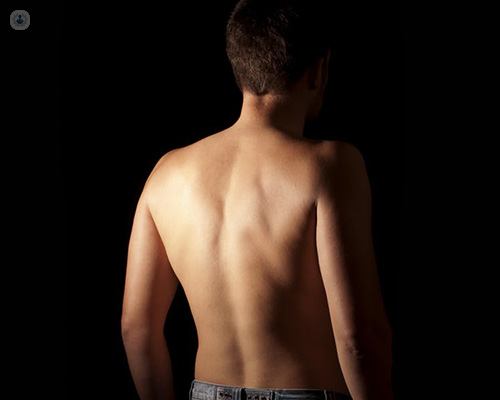What are the different types of spinal stenosis?
Autore:Spinal stenosis describes the narrowing of the spinal canal, which causes nerves to compress and can leave a person with leg pain, tingling and feeling numb. The condition is common in older people and even though it mostly affects the lumbar (lower) spine, it can also affect the neck (cervical spine) or the back of the chest (thoracic spine). Expert neurosurgeon Mr Christos Tolias discusses all three types…

Lumbar spinal stenosis refers to a narrowing of the spinal canal in the lumbar spine. Lumbar spine stenosis is often the result of degenerative changes in the spine, most often due to hypertrophy of the ligaments. The compression of the lumbar nerves often results in a combination of leg pain and numbness. Characteristically patients complain of pain on walking that settles if they rest for a while.
Left untreated it can result in leg weakness and bladder problems. An MRI scan is the investigation of choice for this condition. Around 70% of patients with stenosis on the scan will progress and may require surgical treatment. However, up to a third will remain relatively stable and can be managed without surgery.
Cervical spinal stenosis refers to a narrowing of the spinal canal in the cervical spine. Cervical spine stenosis is often the result of degenerative changes of the cervical spine. Again, if the nerves become trapped, often at the exit foramens, they can cause radicular pain, numbness and paraesthesia, mainly in the arms and hands. More severe stenosis can affect the spinal cord itself and result in difficulty using the hands, balance issues and loss of coordination, increased spasticity of both arms and legs, even paralysis. This condition is referred to as cervical myelopathy.
Treatment will depend on the MRI scan and the clinical picture. More investigations are sometimes necessary (like CT scan and EMG studies).
Thoracic spinal stenosis refers to a less common narrowing of the spinal canal in the thoracic spine. Again gradual degeneration of the ligaments is responsible, although disc bulges, often calcified, are possible. It presents with spastic (increased tone), progressive weakness of the legs and less leg pain. It has to be suspected on clinical grounds, especially if the lumbar scan is not impressive and MRI scan of the thoracic area should be organised. In all cases, clinical examination is very important.
In all cases of spinal stenosis plain X-rays add very little in the initial assessment of patients and their diagnostic workup. They have their role in very specific circumstances, but as a matter of routine, are not recommended. They may also unnecessary delay proper assessment or falsely reassure.
Don't hesitate to find out more information about Mr Tolias and The London Neurosurgery Partnership.


